Container garden trends – 5 ways to wow with potted plants in 2025
Get ready for the next gardening year by planning your container displays now
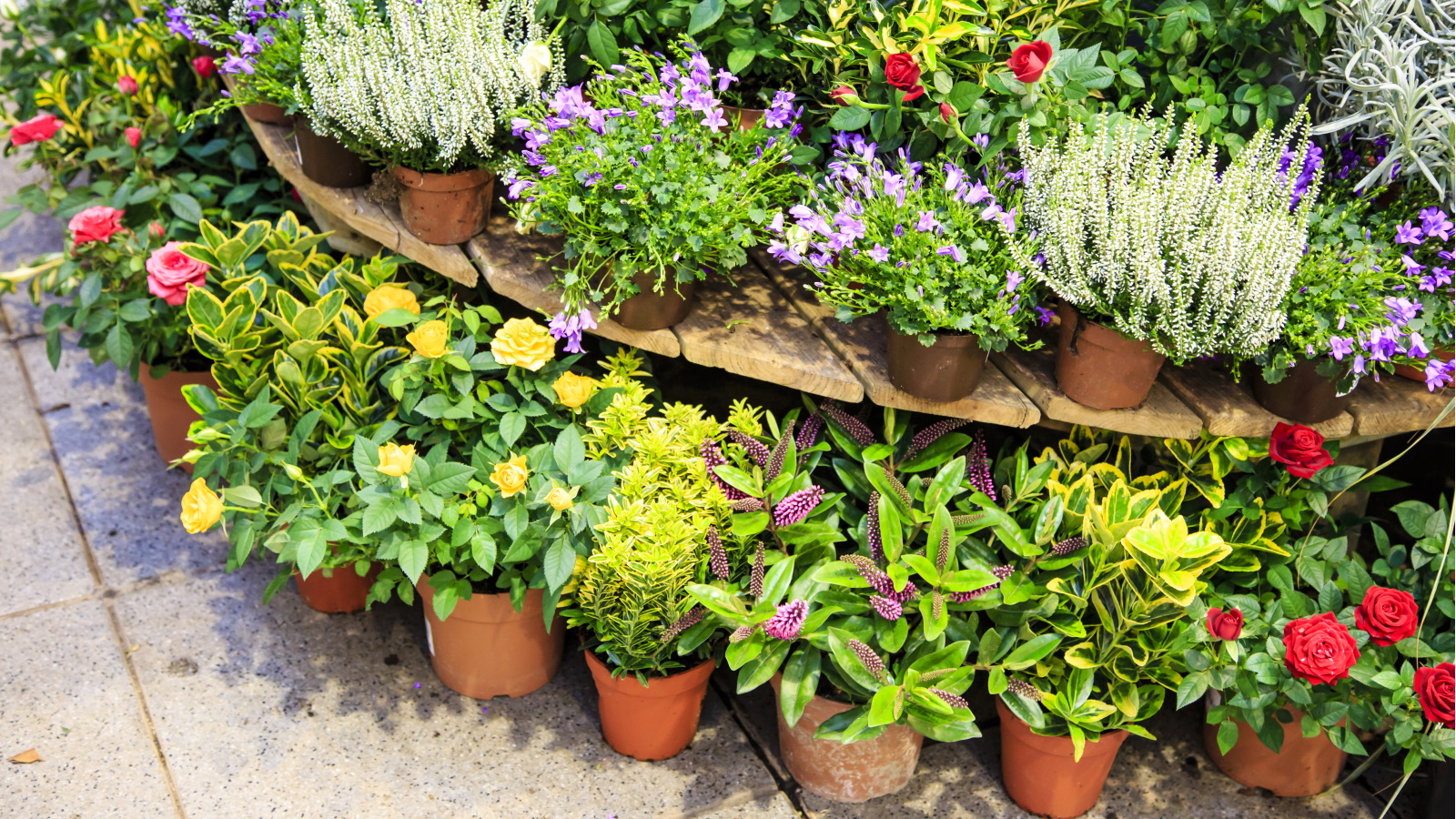

It's never too soon to start thinking about what you want to achieve in the garden next year, especially as summer fades away and colder days settle in. It can be overwhelming to consider your backyard as a whole, so try exploring ideas one aspect at a time.
Container gardening is a great place to start because there are endless opportunities of what you can do, plus you can really personalize your pots in terms of your aesthetic and the seasons - like fall planters, for example. The one hurdle you might face, however, is knowing what will be on trend next year and how to get your containers looking their best for the new gardening year.
Plants rise and fall in popularity in the garden all the time, and often trends come back around. According to garden designers, when it comes to container garden trends we should be thinking about environmentally-friendly gardening, growing vegetables in pots and more in 2025. Here's a list of five inspiring container gardening ideas the pros recommend trying next year.
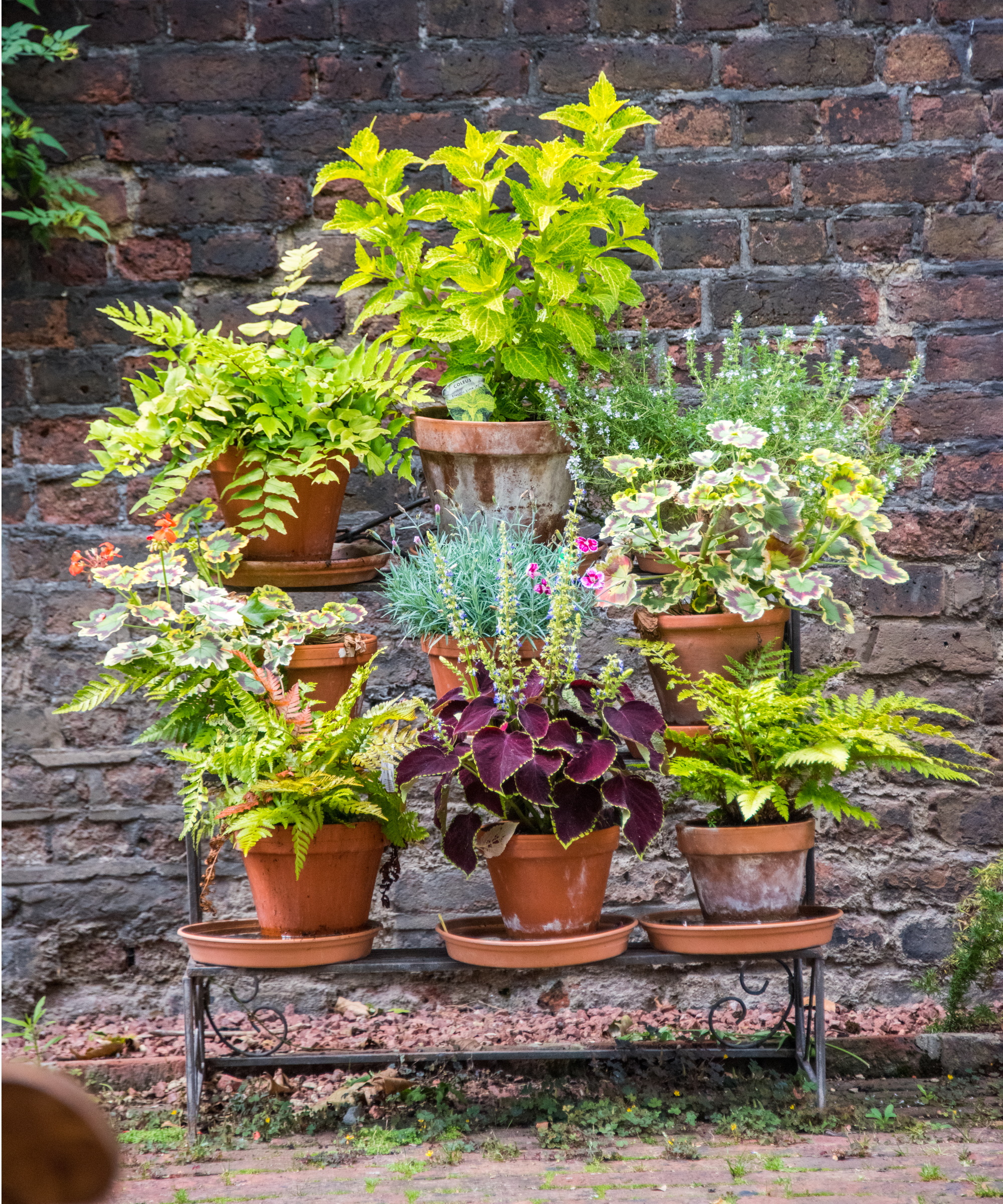
5 container garden trends for 2025
Before choosing what to plant up in containers, there are a few things to keep in mind to make your container gardening successful. This includes avoiding the common container gardening mistakes that lead to failed plants and choosing the best soil for container gardening.
Once you've familiarized yourself with how to garden successfully in pots, you can think about how to curate them. Here, garden design experts have shared the best container gardening trends for 2025.
1. Maximise your vertical space
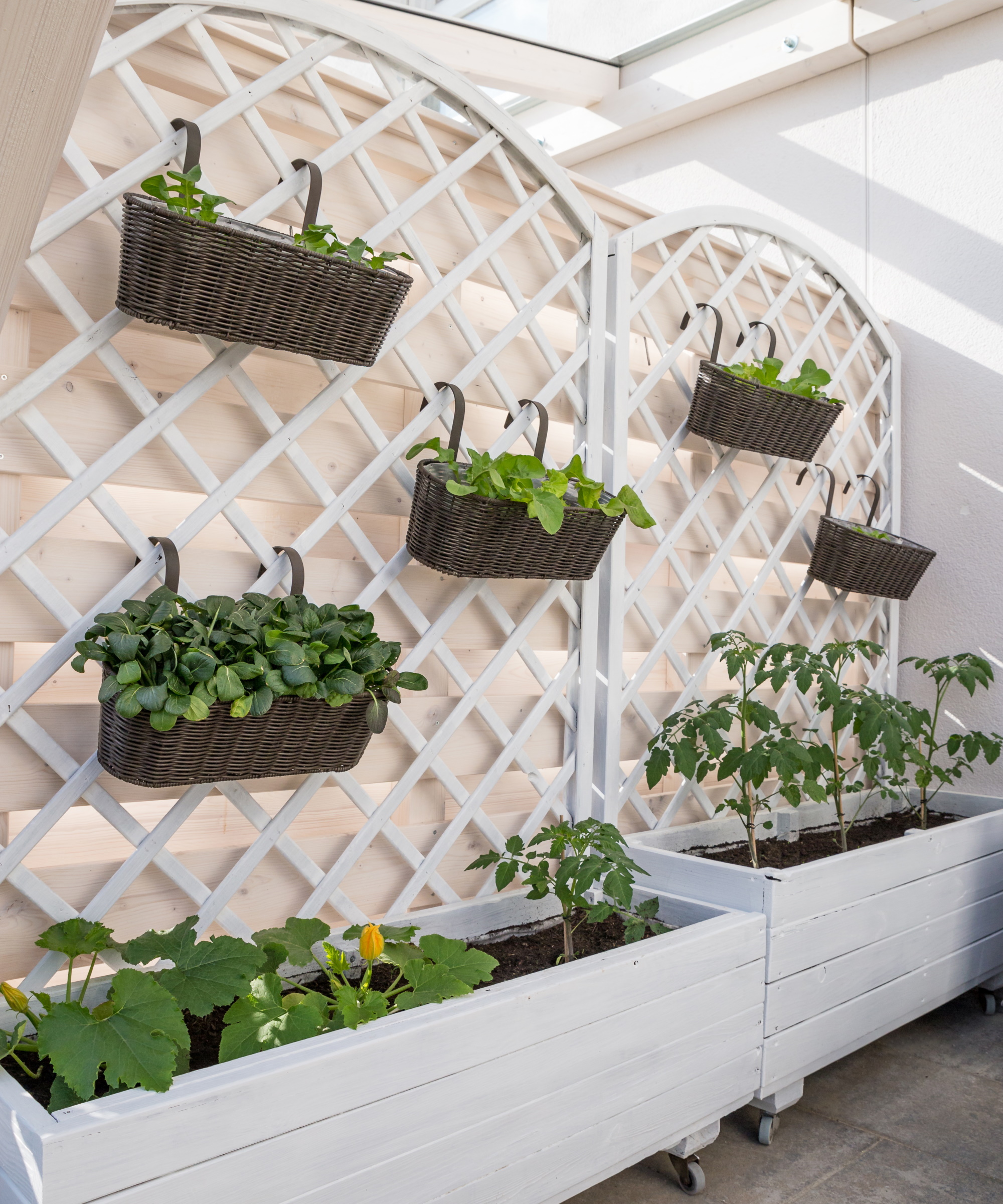
There are lots of benefits of vertical gardening and its growing popularity largely comes down to the fact that it allows you to maximise the space you have available. Whether you create a living wall or simply use a plant stand to tier containers, there are lots of ways to use vertical space in your container garden.
'A vertical garden fits any size patio or terrace since plants grow upward,' says garden design expert Joe Raboine. 'There are a variety of ways to construct a vertical garden, like using traditional pots and stakes,' he adds.
Another advantage of vertical gardening is that you can use trailing plants for baskets for a cascading effect.
There are plenty of ways to create a vertical garden with containers. This vertical planter from Amazon, for example, makes it easy to display potted plants in this way.

Joe is Vice President of Design at Belgard, a hardscape company in Atlanta, Georgia. He is an expert in paving, paths and fire pits, and has worked in the industry for 25 years.
2. Plant containers for pollinators
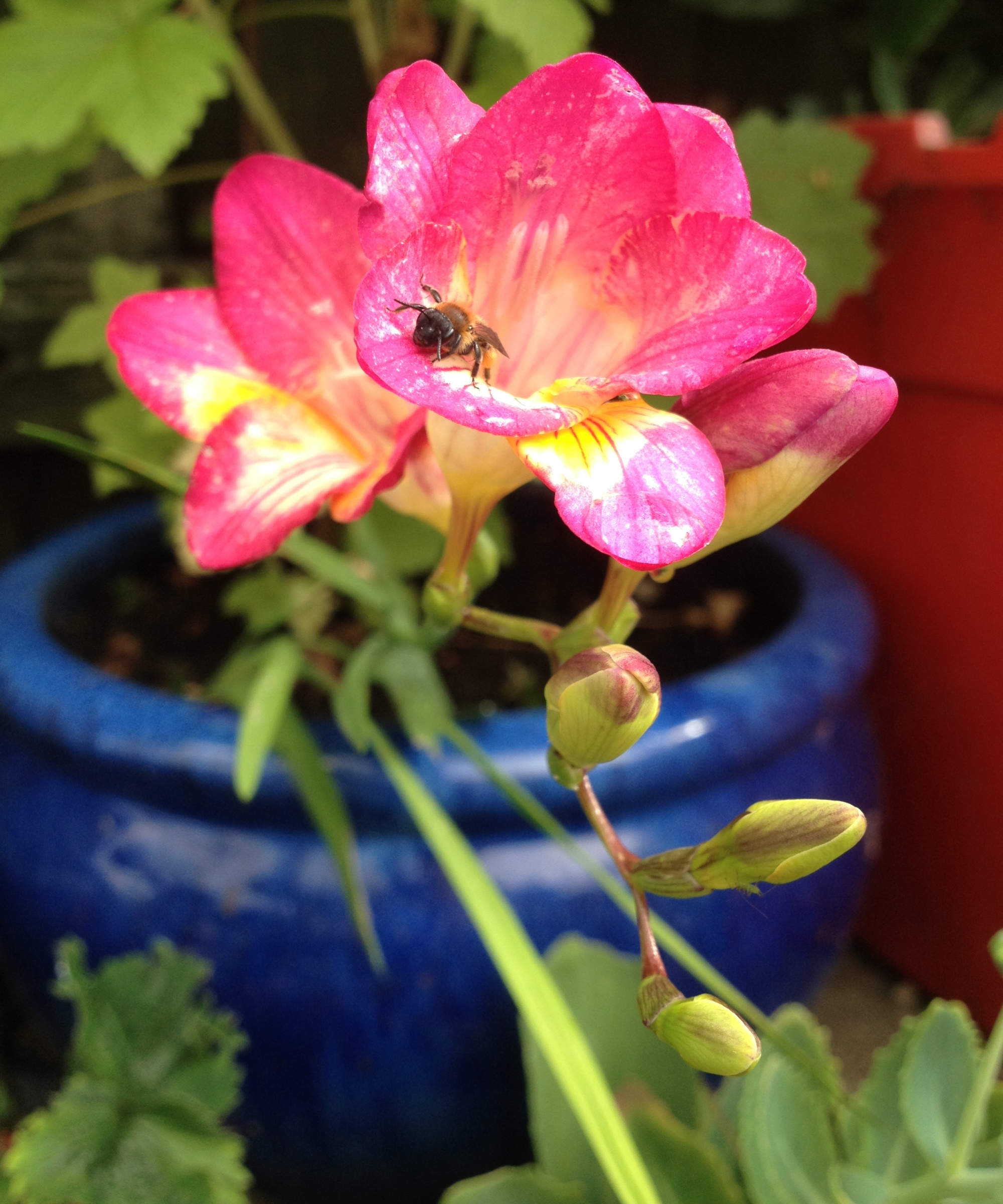
Eco-friendly gardening isn't going out of style any time soon and that includes thinking about how to create a wildlife garden. For pots, that means incorporating some of the best container plants for pollinators.
'Invite butterflies and hummingbirds to your patio by choosing pollinator-friendly flowers for every season,' suggests garden designer Laura Janney. 'Not only do lantana, petunias, salvia, pansies and zinnias add vibrant color, but they also attract delightful visitors to your outdoor space,' she says.
There are so many plants for pollinators that can be grown in pots, like those mentioned by Laura, so you can create containers that suit your style and welcome plenty of bees, butterflies, birds and more to your yard.
'Even a small container garden can attract beneficial insects, feeding them through the season which will keep their reproduction rate high, positively impacting the environment,' says Meredith Bishop, sustainable flower grower and owner of Bloom and Bounty.
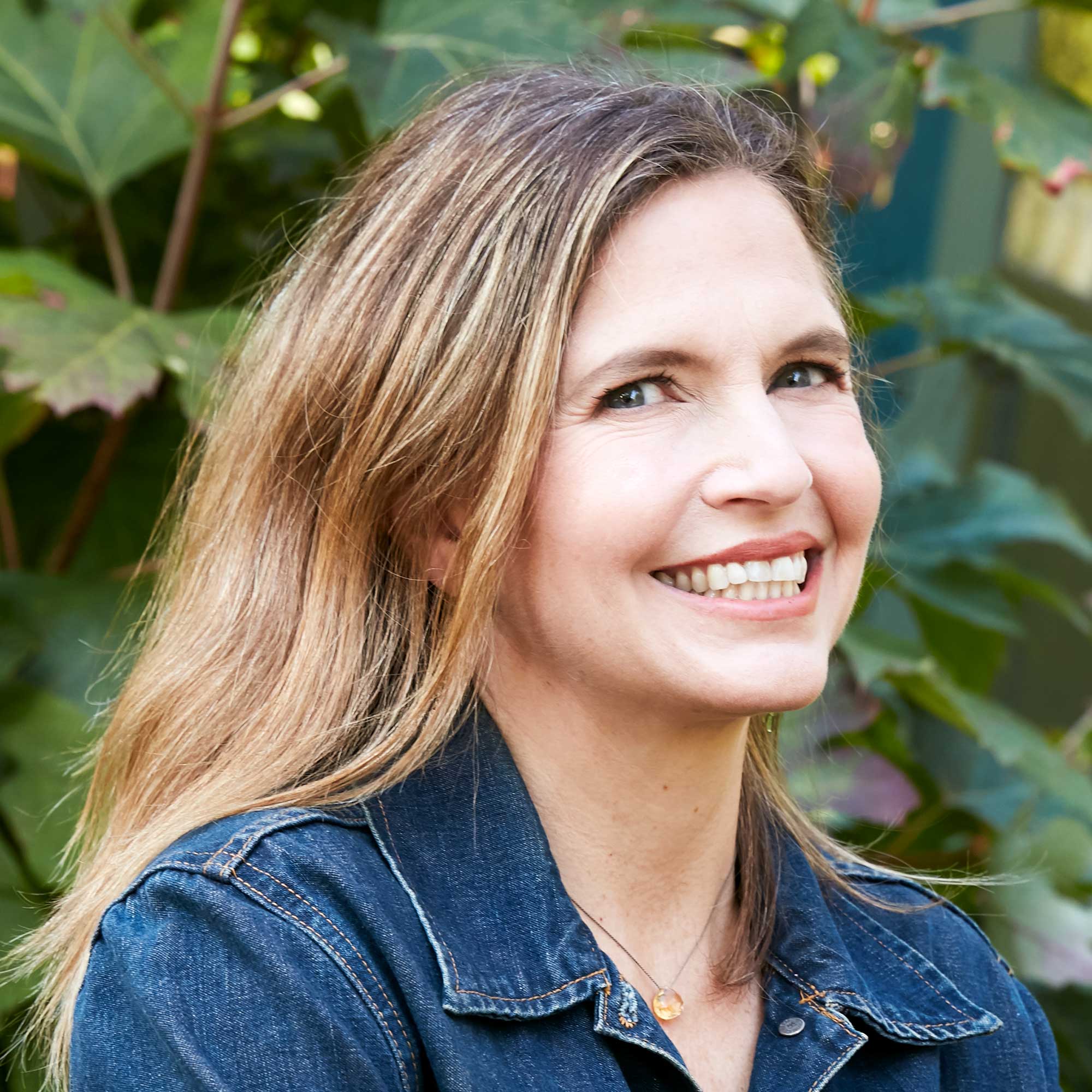
Laura is the Founder and Owner of The Inspired Garden. A winner of the 2024 Houzz Design award, Laura has over 20 years of experience in gardening and working with clients designing beautiful gardens. With multiple courses under her belt, Laura would make a great resource on all things gardening.
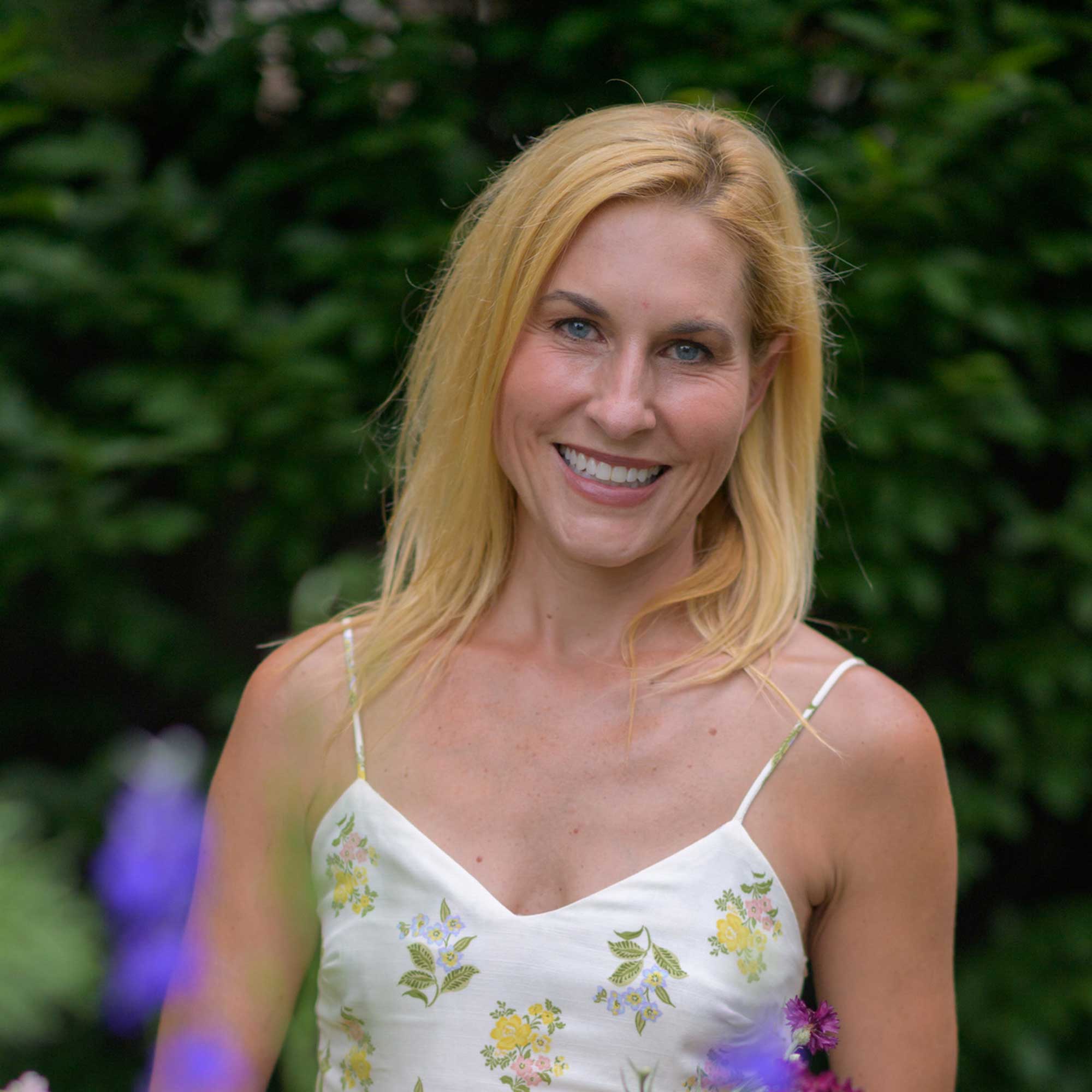
Meredith Bishop is a sustainable flower grower specializing in old-world blooms grown from seed in her gardens in urban Nashville, Tennessee. She also operates a retail design studio in Nashville, and enjoys teaching, speaking and writing about all aspects of flower gardening.
3. Opt for water-wise plants
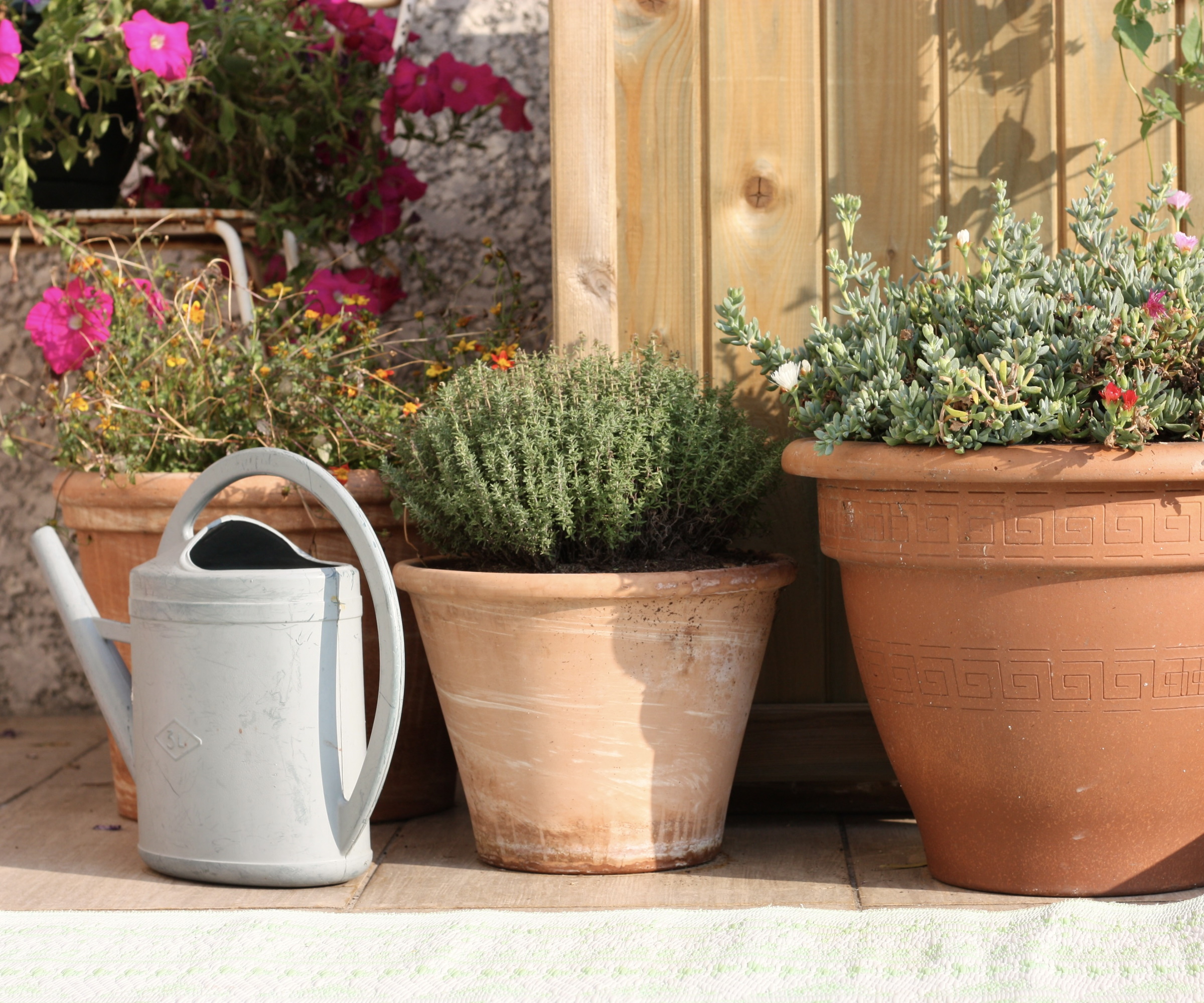
Along the same lines as providing for pollinators, designers expect containers to continue reflecting the changing climate with drought-tolerant plants for pots.
'The most important trends that we will see in 2025 will revolve around concerns for the environment, with water-wise plants - think a Mediterranean plant palette,' says James Brayton Hall, president and CEO of The Garden Conservancy.
There are so many different ways to achieve pots that save water, including incorporating Mediterranean plants like geraniums and agapanthus which retain water well.
'Remember, drought-tolerant doesn’t mean 'no water' - these plants prefer soil that isn’t constantly moist,' notes Laura.
Try using these self-watering planters from Amazon to manage the moisture levels of your plants.

James is president and CEO of The Garden Conservancy. He has a personal passion for gardening which fuels his role in preserving, sharing and celebrating America's gardens.
4. Create an edimental container garden
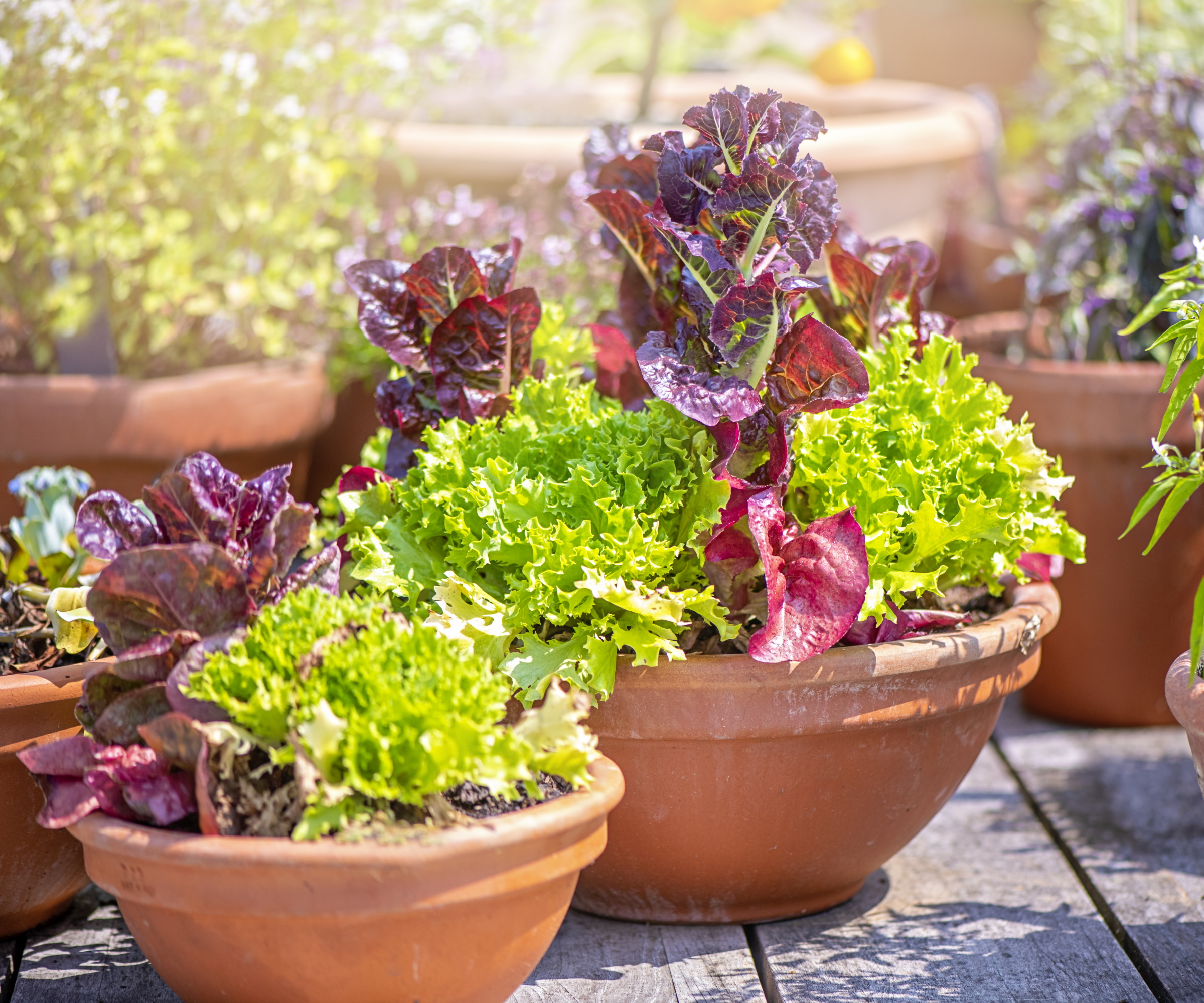
It's not all about flowers and foliage, as vegetable container gardens are becoming increasingly popular. In particular, designers say to focus on using edimentals in pots - ornamental edible plants.
'From herbs and vegetables to attractive berries and fruiting vines, incorporating edibles into pots and planters is very on-trend,' says Lindsey Chastain, gardening expert and the Founder of The Waddle and Cluck blog. 'Go vertical with climbing plants or focus on compact varieties suitable for smaller spaces,' she suggests.
There are lots of vegetables for pots that you can choose from and you can even opt to use a vegetable trellis in a container to use vertical space with climbing edibles.
The possibilities don't stop at vegetables, either. 'Some of my favorite salad toppers are edible flowers with petals from violas, pansies or dwarf dahlias, and all can be grown in pots right outside your kitchen door,' says Meredith Bishop.

Lindsey started gardening in 2005, when her first son was born, as a way to save money. It started with a small window herb garden, then expanded to potted vegetables, and now, she and her husband can regularly be spotted in the garden on their homestead.
5. Choose stylish pots
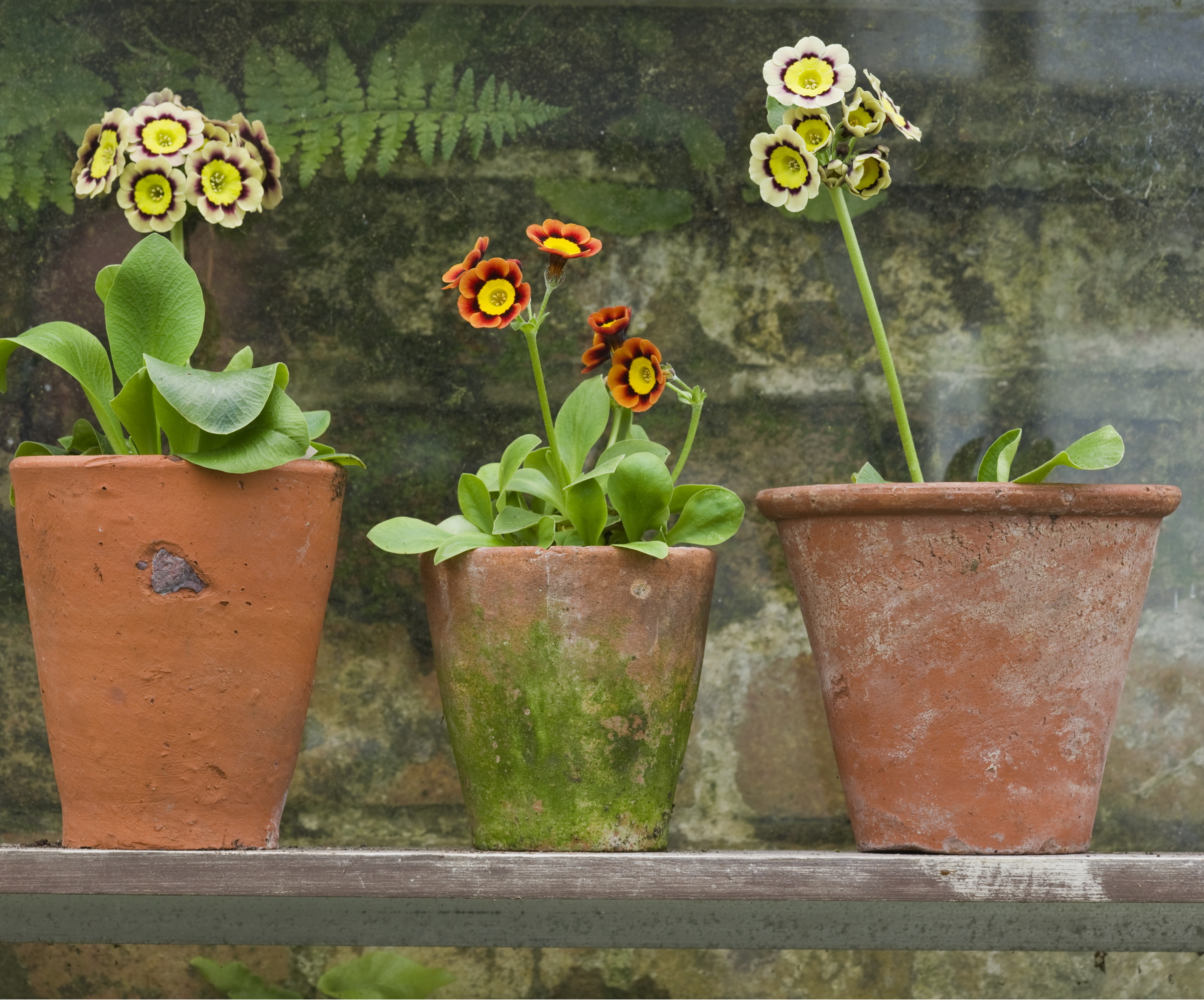
No container garden is perfected without the right vessel. For 2025, experts say to focus on simple designs and convenient containers.
'Let your flowers take center stage by opting for sleek, frost-proof, lightweight containers,' says Laura Janney. 'Homeowners are moving away from heavy ceramic and overly ornate planters, favoring simple designs in neutral tones that offer timeless elegance,' she adds.
Being able to move containers can be helpful for when frost comes around. That's why designers are expecting to see more pots made from light materials like plastic - like these plastic flower pots from Amazon.
Having said, terracotta planters are a classic that aren't expected to go out of style. 'Neutral-colored planters made of natural materials like terracotta are popular for their calming, earthy aesthetic,' says Lindsey. 'Choose a palette of warm beiges, browns, tans and greys to complement the colors found in nature,' she suggests.
Just make sure to clean terracotta pots to keep them in pristine condition.
FAQs
When should I plant up my containers for spring?
The best time to plant up your containers for spring depends on the type of plants you want to grow. Generally speaking, you should aim to plant spring bulbs in fall before frost, or early spring after frost. This will give them enough time to establish well and flower for the spring season. The best thing to do is research the specific plants you wish to grow in pots and plant accordingly, making sure to protect you plants from harsh winter weather.
Try putting your own spin on these trends and personalize them with your favorite seasonal plants. Even if you're new to container gardening, you can still give these trends a go for the upcoming year. Our guide to container gardening for beginners might be useful for getting to grips with the basics for achieving these ideas successfully.
Sign up to the Homes & Gardens newsletter
Design expertise in your inbox – from inspiring decorating ideas and beautiful celebrity homes to practical gardening advice and shopping round-ups.

Tenielle is a Gardens News Writer at Homes & Gardens. She holds a qualification in MA Magazine Journalism and has over six years of journalistic experience. Before coming to Homes & Gardens, Tenielle was in the editorial department at the Royal Horticultural Society and worked on The Garden magazine. As our in-house houseplant expert, Tenielle writes on a range of solutions to houseplant problems, as well as other 'how to' guides, inspiring garden projects, and the latest gardening news. When she isn't writing, Tenielle can be found propagating her ever-growing collection of indoor plants, helping others overcome common houseplant pests and diseases, volunteering at a local gardening club, and attending gardening workshops, like a composting masterclass.
-
 These are the 6 must-have colors to decorate with in April 2025
These are the 6 must-have colors to decorate with in April 2025What do retro-inspired yellows and beautiful blues all have in common? They're on our hot list for the season ahead
By Sophia Pouget de St Victor Published
-
 Plants never to grow next to fruit trees
Plants never to grow next to fruit treesExpert advice on which plants to keep away from fruit trees to encourage a healthy harvest
By Jacky Parker Published